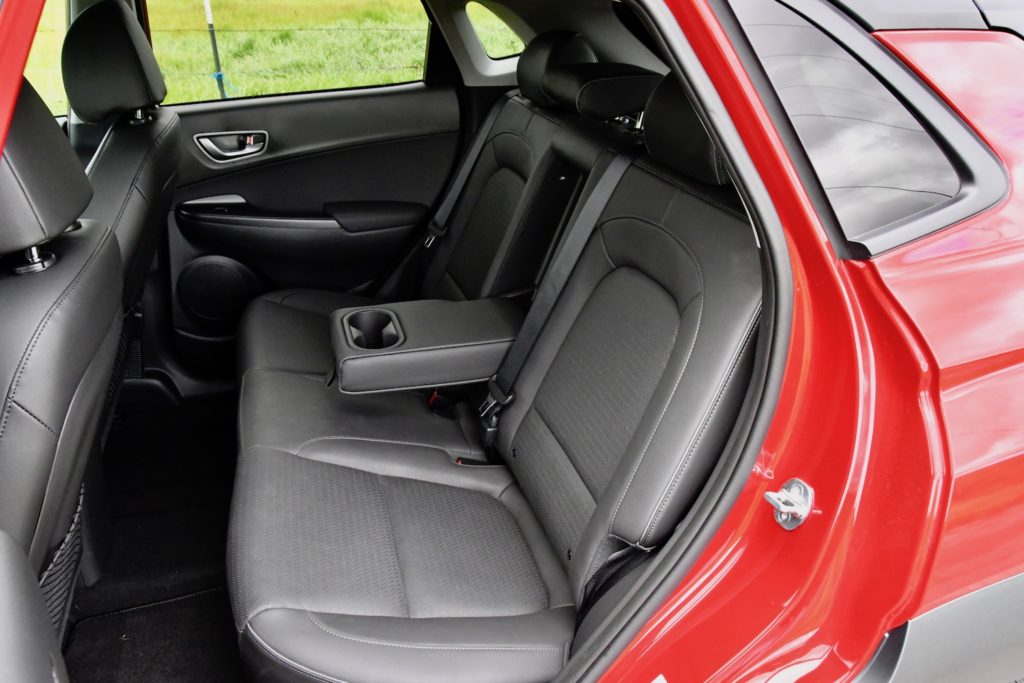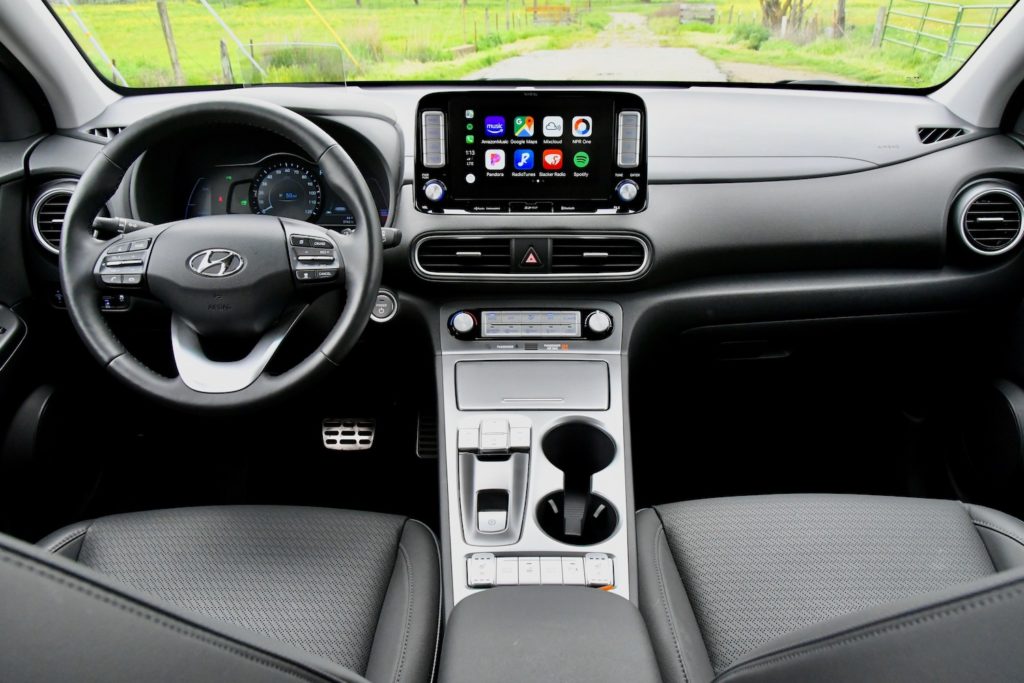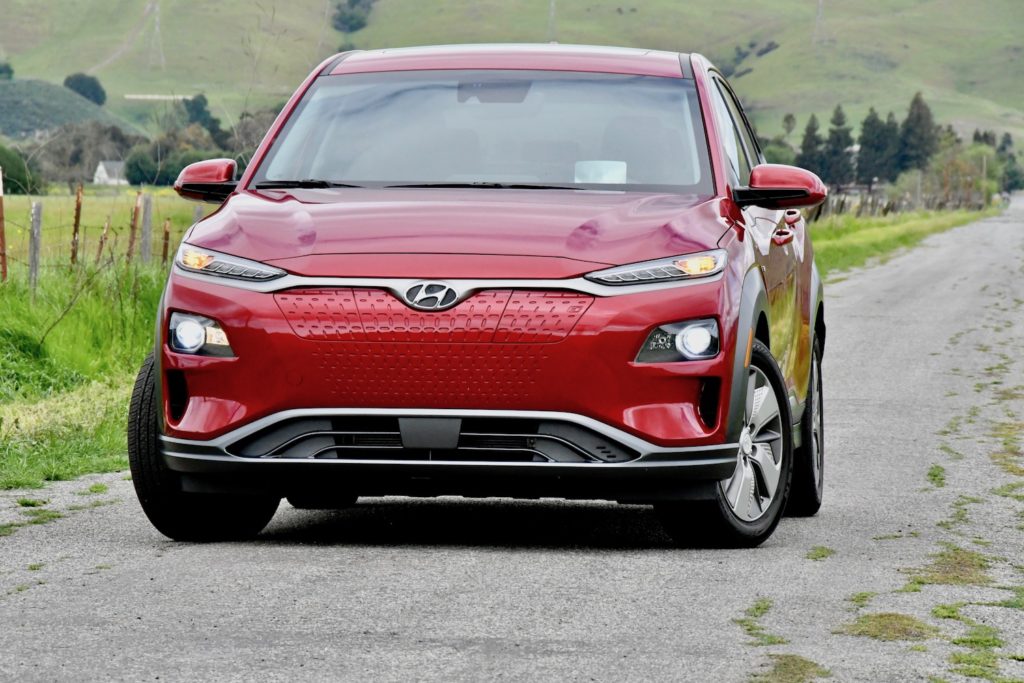The Leading Value in the Next Wave of Affordable EVs
2019 will be remembered as the year that battery electric vehicles became mainstream with choices available from several manufacturers, offering options that have become legitimate alternatives to traditional internal combustion engine vehicles. Compromises with price, range, charging, and features are finally becoming a thing of the past. Prices and range are becoming competitive with conventional cars, public charging infrastructure continues to come online at a furious pace, and the features of EVs are highlighting the unique advantages of owning and operating them.
The 2019 Hyundai Kona is a perfect example of this revolution. The Kona is a CUV (Compact Utility Vehicle) that offers a competitive price, that along with federal tax credits has an entry price of under $30K and offers an EPA rated range of 258 miles or more under real-world driving. The Kona has industry-standard charging for use at home or on the road and has class-leading safety and convenience features that are on par with conventional luxury CUVs.
The Kona EV is part of a family of CUVs that was designed with conventional, hybrid, and electric powertrains in mind. This strategy allows Hyundai to leverage the costs of manufacturing the Kona over a much broader base than just one vehicle and gives Hyundai the flexibility to match supply with demand. And if our time with the Kona EV is any indication, the market is going to be strong for the EV version.
Overall the Kona is about the same size as the Lexus UX, Toyota C-HR, and the Chevy Bolt. It is shorter than the Nissan LEAF and has less cargo space, but its passenger space feels quite roomy despite it being a small crossover. It’s essentially a five-door hatchback reimagined for the 21st-century compact crossover buyer.
The Kona is powered by a 201 HP permanent magnet motor that has 290 lb-ft. of torque driven through a single speed transmission driving the front wheels only. That gives the Kona EV plenty of grunt that gets it from 0-60 in 6.4 seconds. Consider that it wasn’t that long ago that that sort of performance was considered to be supercar territory. With the Kona EV’s instant torque, it certainly can feel like a supercar.
The Kona’s 64.0 kWh lithium-ion battery pack sits under the floor and offers an EPA range of 258 miles. The Kona is currently the leader of the pack for mid-sized and priced EVs, but that is a moving target, with the other mid-priced EV manufacturers offering to compete EVs that are in the same general range.
The Kona EV uses the industry standard SAE Combo Charging System. The Kona is equipped with a 7.2 kW onboard Level 2 charger for home or destination charging, and a 100 kW DC fast charger connection. The 7.2 kW onboard charger can fully replenish the battery in about 9 hours, and the CCS connection can do the same in between 75 and 50 minutes depending on the speed of the DCFC unit. CCS is the fastest growing charging standard in the world, and while Tesla’s proprietary charging standard has an early lead, the number of public CCS chargers coming online is quickly outnumbering the Tesla system.
The Kona is well equipped with creature comforts and technology features. The front and rear seating is comfortable, with 8-way seats designed for Americans in either cloth or leather depending on the trim. The rear seating for some may be a bit tight, but generally, it is on par with the Kona EV’s competitors. The Kona’s interior is comfortable but seemed noisy especially in the rear of the vehicle. The low rolling resistance tires and lack of rear chassis sound deadening in the wheel wells is suspect for the excess noise. Cargo capacity for the Kona EV is average for a CUV at 19.2 cu. ft. which is perfect for carrying a couple of bags of groceries, but not much more.
Large 7 or 8-inch displays for the driver and infotainment provide excellent, clear, easy-to-see access to controls and information. On the Ultimate trim, a retractable heads-up display (HUD) offers a variety of speed, direction, and safety information directly in the driver’s line of sight. An available 315-watt Infinity audio system combined with Android Auto, Apple CarPlay Sirius XM, HD radio and USB 3.0 inputs has excellent sound and can be paired with just about any audio source. The Kona supports Hyundai’s latest Blue Link LTE hotspot connectivity and wireless charging for smart devices.
Hyundai’s “Smart Sense” safety suite is standard on the Kona EV. This includes forward-collision avoidance with pedestrian detection, lane-keeping and blind-spot assists, rear cross-traffic collision avoidance and automated high beams. Adaptive cruise control with stop and go capabilities are available. With the adaptive cruise control, the Kona is a Level 2 autonomous safety assist system like those from Tesla, Nissan, GM, and the others, and is very competent and on par with the current top-tier safety systems.
Testing the range was high on the list, so with 257 miles of range indicated we took off from San Jose for a trip up to Napa Valley and back. We drove with traffic at about 65-70 mph for a round trip of 235 miles. When we got back home, the Kona still had 20 miles left with an average miles/kWh of 3.8. The official EPA economy rating for the Kona is 132 city/108 highway/120 combined MPGe.
The drive was very comfortable except for the tire and road noise, and we never experienced range anxiety. While not every community has the benefit of an EV charger on every corner, it has become the norm in Northern California, with the saying “As California goes, so goes the world” applicable here. If anything, our range drive was perfectly normal and routine, boring even. If EVs are to become mainstream across the land, “boring” is a good thing to be.
The Hyundai Kona EV is a very competent, well-engineered CUEV, but for those wanting a closer look, it may be tricky initially. Hyundai is being very conservative in making the Kona EV available in showrooms. Initially, it is only available in California, and Zero-emission focused states along the west and east coasts. Hyundai will eventually offer the Kona EV in all 50 states, and in the meantime, it is rumored that it can be special-ordered in areas where it is not initially available.
Pricing for the Kona EV ranges from $36950 for the SEL, to $44900 for the Ultimate. Also, all trim levels have a $1045 destination and handling charge.
The Kona EV does qualify for the full Federal tax credit of $7500, and any state, local, or utility rebates or credits available.
The Kona EV is the current benchmark for a well-equipped, reasonably-priced EV vehicle. It’s the car being measured today against its competitors, like the Chevy Bolt, Nissan LEAF, Kia Niro and even the Tesla Model 3. But as the EV market continues to develop and mature, with new models continuing to be introduced, who knows who will be top-dog tomorrow.







